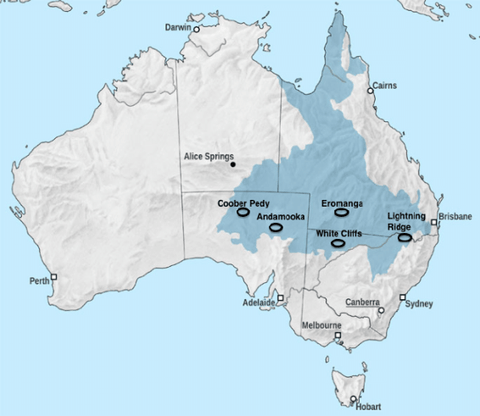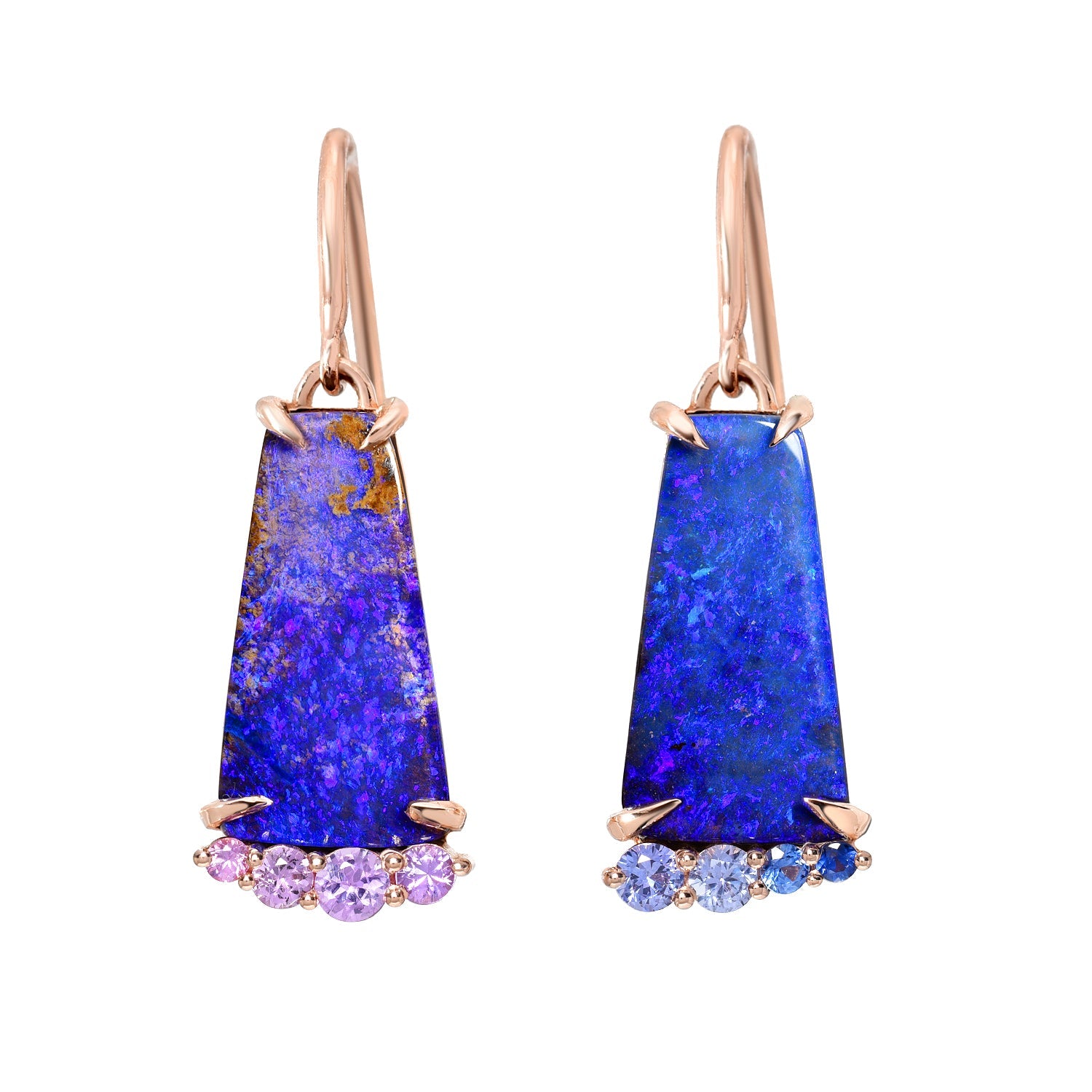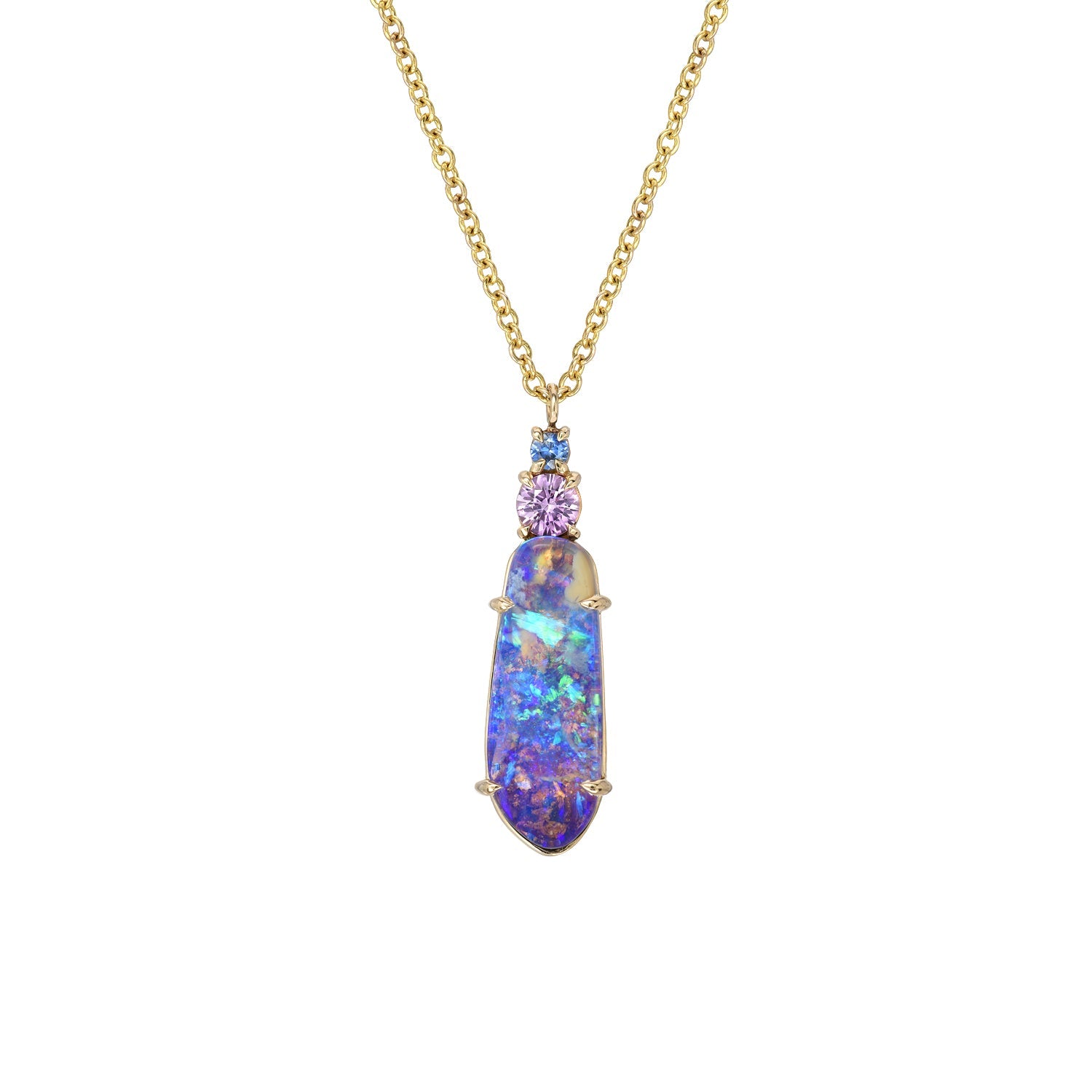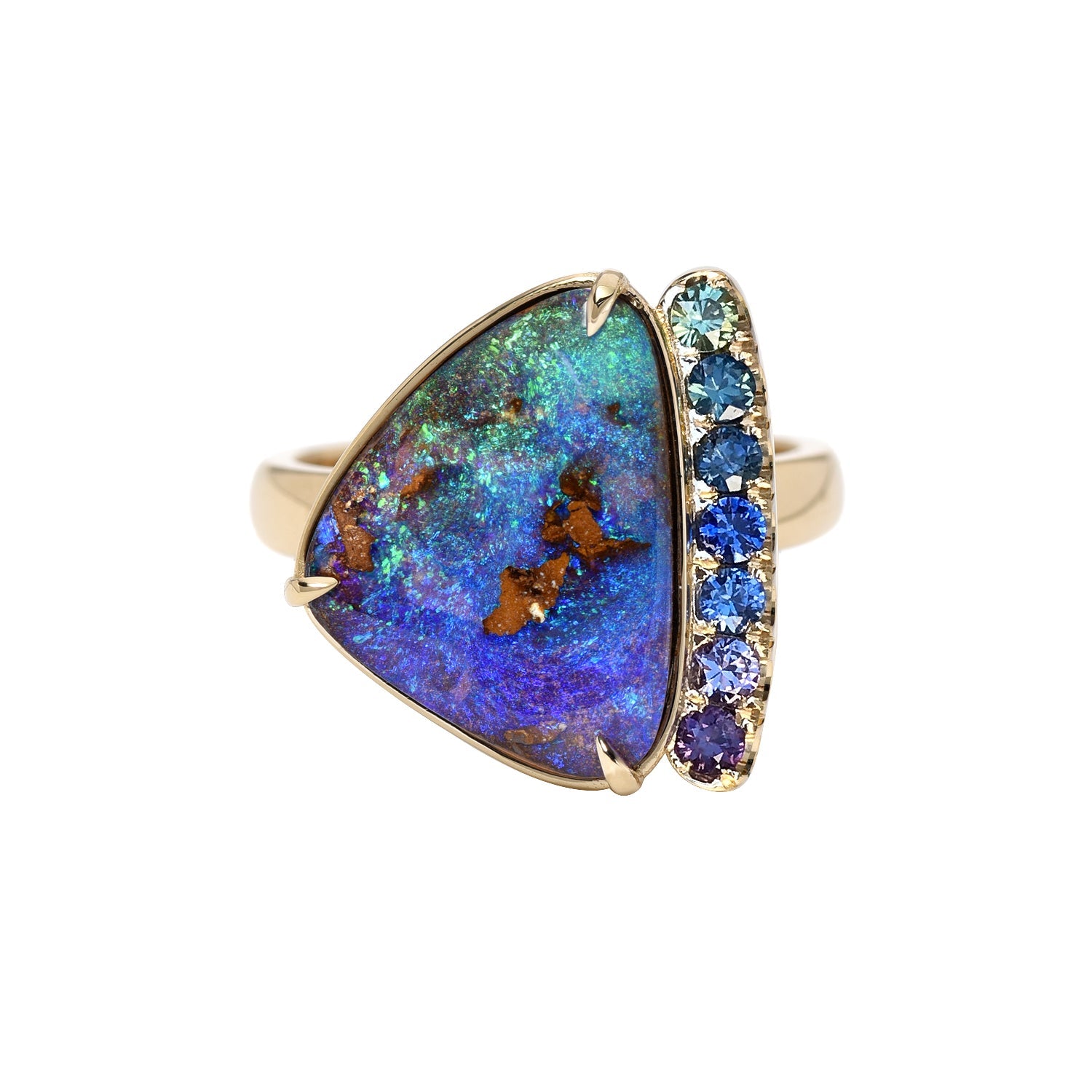
Black Opal Q & A
nicole gluckmanShare
The most valuable and the rarest of Opals, Black Opals, have garnered allure for centuries and continue to grow in popularity. But what makes them so desirable? What draws us to them? Why are we so captivated by them? In this article, we’ll discuss some of the key characteristics of Black Opals and provide a point-by-point Q & A to aid in your search for the perfect Black Opal jewelry.
Black Opal Q & A
Where do Black Opals come from?
Like most of the world’s Opals, the vast majority of Black Opal comes from Australia. 95% of the Opal mining industry has called this place home since the late 19th century. Most high-quality Black Opals come from Lightning Ridge in New South Wales.

Why are Black Opals so rare?
Black Opals are incredibly rare which is part of their appeal — and it’s also part of why they are so expensive. Opals can be found worldwide - in Brazil, Mexico, Ethiopia, and even parts of the USA - but gem quality Black Opals are predominantly supplied by Australia. They are mined in the region of Lightning Ridge — a rather dry and desolate locale, presenting challenging mining conditions for the population of 2k that live in the small and notoriously quirky Australian Outback town. Life isn’t easy for these miners. And their baseline investment in equipment and claim registration can be quite steep — just for the chance to unearth a high quality Opal. They may end up losing tens of thousands of dollars (or even more) and not find a single Black Opal. This is, in part, why Black Opals are so expensive.
What makes Black Opals different from Other types of Opals?
It all comes down to color. Black Opals have what some experts refer to as “a seemingly infinite display of colors.” Black Opals, unlike other Australian Opal stones, are characterized by dark potch beneath their layer of precious Opal. Generally speaking, the darker the base tone, the greater the contrast of, and more lively, the precious Opal resting on top appears. (Exception: Black Crystal Opals lack dark potch — they instead have a dark body tone against which their play of color will flash.)
Compared to other Opal types, which have lighter base tones, Black Opal’s charismatic facade dances with some of the most vivid hues — all of which contrast superbly against the gemstone’s natural dark body tone. To many jewelers and collectors alike, it’s simply the most stunning gemstone on the planet. It's incredibly beautiful and exceptionally sophisticated.
How much does Black Opal cost and what drives its price?
The price of Black Opals varies based on a range of factors including provenance, visual attributes and the market economy. Origin is one of the most basic distinctions — Australian Black Opals are considered to be of much higher quality than Ethiopian Black Opals. To what degree? To the extent that many jewelers don’t even classify Ethiopian Black Opal as actual Black Opal. While there are some natural Ethiopian Black Opals, many of those found in circulation are the products of human tampering. In many cases chemical and physical processes, such as smoking, have been applied to the stones resulting in treated Opals that look darker than they naturally are.
Another thing to consider is the stone’s play of color - how its chromatic hues move and reflect throughout the gem, the visible patterns the colors create, and the brightness of the Opal - all of which influence the ultimate price of the stone in question. A Black Opal with the full spectrum of color - especially if it includes red, the rarest color - can significantly increase the stone’s value. Fold in a highly prized pattern, like the exceptional harlequin pattern, and suddenly the Opal's price can skyrocket. But a dim stone with a breadth of color and coveted pattern won’t be nearly as valuable as a bright stone with both. There is no single trait that drives Black Opal value — a multitude of factors work hand in hand to collectively determine its market valuation.
A Black Opal’s price can vary from under $100 per carat - for a very small or relatively low quality stone - to over $10,000 per carat for a truly exquisite piece.
Also important to remember is the amount of work (and cost) of extracting these stones, along with their dwindling supply. Like any market, where supply and demand are the driving forces behind cost, the availability of Opal is a huge driver for the price of the stone. As existing Opal fields are worked, and supplies are diminished, the earth cannot keep up with our appetite for this gem — millions of years are required for Opal to form. There’s also increasing governmental oversight and paperwork required, as well as environmental concerns to address. Miners have to observe many regulations, and in some cases certifications or permits are rejected. On the upside, these bureaucratic obstacles result in more ethically supplied gems. You can feel good about investing in Australian Opal, knowing that it’s both an ethical gemstone and conflict-free. These gems may absorb some of those extra costs that help to ensure the stone is procured in good conscience.
Questions to ask your jeweler when buying a Black Opal?
When you decide to purchase a Black Opal, you not only want to love the aesthetics of the stone, but you also want a stone of good quality, and a jeweler who knows how to properly handle it. Here are 3 fundamental questions to ask your jeweler when considering investing in a Black Opal.
- Where does the Black Opal come from?
It’s important that you understand the genealogy of the stone — particularly the provenance of the Opal. There are some important differences between Australian and Ethiopian Opals that a jeweler should be knowledgeable about if working on your Opal jewelry.
- How long have they been working with Opals?
Black Opals possess certain properties that need to be respected. They are soft gemstones and don’t respond well to heat or pressure. It’s important that you have an experienced Opal jeweler work with your stone so they know how to design for its unique nature and how to handle it during the production process. Opal experience is key.
- Can they show you examples of their work?
Most great Opals artists have a portfolio to display their craftsmanship. This is one of the best ways to ascertain if the jeweler and the gemstone is the right one for you. Through their selection of stones, transformative designs and use of color you’ll get a better feel for their style and whether or not it meshes with your own.
The more honest an answer you get, the more trustworthy the jeweler likely is. Most are incredibly adept when it comes to gemstones, but that doesn’t necessarily mean they have a grasp on the intricacies of working with such a fine asset as Black Opal.
Here at NIXIN Jewelry, Opals aren’t just our specialty — they are our passion. Come find your one of a kind black opal necklace or other black opal jewelry!




